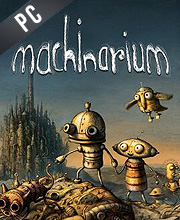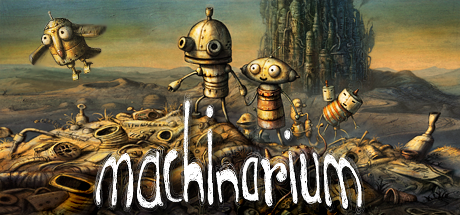
I don’t want to give much more away, as the game is quite light on story anyway. I also loved how the amount of screen space taken up varied between different locations, as can be seen in the various screenshots throughout this review. Once you adjust to Machinarium’s unique pace and logic, you can easily lose hours as you try to progress further. I loved how the game gave a great sense of place, with the city connecting different locations realistically and inventively.Īs I played more and more, I often found myself quite happy just to wander around, listening to the beautiful soundtrack and looking at the stunning artwork. Sure, this is a hard game, but the design is second to none in my eyes. Yet here, in the world of Machinarium… it all just felt so organic and natural. Sure, in other games puzzles that require swapping dozens of wires/ sliding tiles/ changing fuses, I would cry “LAZY PUZZLE DESIGN!” and be done with it. Looking back however, I don’t really think this was the case. It is odd, because my initial impression of the difficulty was that it felt slightly unfair. You can even access a fully drawn step-by-step walkthrough of the current level if you defeat an arcade shooter game that protects the hint book icon, although you have to beat this game every single time you wish to cheat. Clicking the light blub icon at the top of the game window will show a thought bubble with a clue. The game does feature a really great help system though, which somewhat alleviates the difficulty. What do I mean? Well, by that I mean there are slider puzzles, space-invaders style shoot-outs, and many fiendish locking mechanisms to wade through. My favourite were inventory based, and situational. This is due to the nature of the puzzles themselves. And boy, do the puzzles in this game deliver! Some of the puzzles in this game are bordering on genius, although I sadly had to resort to a walkthrough several times for the more difficult ones. Therefore, the game instead relies on charm, artistry and puzzles to keep the player’s attention. Taking control, the player must put themselves back together before journeying home to save their lady robot friend (and defeating the bad guys, who have planted a bomb!) The story is very simple but ultimately very satisfying. The story begins with our protagonist, a little robot with a big heart, who is literally dumped in several different pieces outside the city where he lives.

You can see what the various robots in the world are thinking via animations that display in thought bubbles above their heads, but no words will ever be spoken. Rather, it means that this game is a strictly visual experience (with a healthy dose of fantastic music and sound).

This does not mean that there is no story present though, far from it actually. Unlike most point and click adventure games, Machinarium features zero dialogue. It really is a delightful pleasure to load up an independent game from a small Czech development studio and be blown away, in this day and age of HD graphics and next-gen console gaming, by an indie offering. This game features amazing background music and sound-effects, perfectly suited to the onscreen visuals. The next thing you notice is the sound design.


(Usually used for short, online-only games.)
#Machinarium switch review full
Showing a dense robot city full of hustle and bustle, the artwork on display is never anything less than stunning, elevating the material far above its Adobe Flash-based engine. The first thing that strikes you about Machinarium, the new point and click adventure game from Amanita Design (creators of Samorost 1&2), are its graphics.


 0 kommentar(er)
0 kommentar(er)
